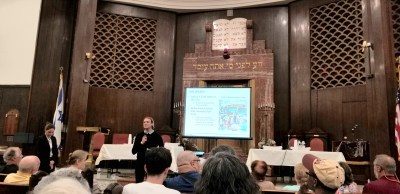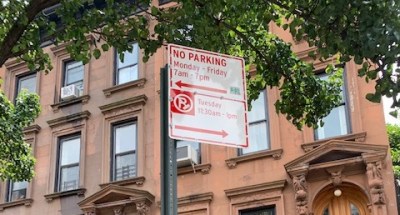DOT Adds Delivery Zones to Tackle Church Avenue Double Parking

The fight for scarce street space is always fierce in New York City, and as DOT’s efforts to install bike and bus lanes across the city have revealed, the most contested zone of all is probably the curbside. On commercial streets, drivers can’t get enough of the underpriced on-street parking while businesses want curbside access to load and unload deliveries. The result is rampant double-parking, cruising, and ultimately congestion — slowing down buses and creating more dangerous conditions for pedestrians and cyclists. In some cases, local displeasure about curbside dysfunction manifests itself as opposition to seemingly unrelated livable streets improvements, like the Fifth Avenue bike lane in Park Slope.

With a new program on Brooklyn’s Church Avenue, DOT is trying to solve at least one part of the puzzle. Starting in mid-January, 40 parking spaces on Church Avenue will be dedicated exclusively for deliveries from 7 a.m. to noon on weekdays. On the block between 18th and 19th Streets, truck loading will be available until 3:00 p.m.
With 65 percent of all deliveries to the neighborhood already taking place before noon, according to DOT, the idea is to give trucks the space they need at times when they’re just going to take it anyway. If successful, all the area’s deliveries could be made in the dedicated spaces within the time window. Theoretically, no trucks would double-park, morning or afternoon.
One group that should be particularly excited: the 38,000 weekday riders on the B35 bus, the sixth busiest route in the city. They’re paying the price for the fact that at least one Church Avenue lane — and there’s only one in each direction — is blocked by double-parkers for a quarter of the day, according to DOT.
The program has strong backing from local businesses. According to Community Board 14 chair Alvin Berk, a few years ago, the Church Avenue BID came to the community board with a proposal to bring ParkSmart to the stretch, raising meter rates during peak demand hours. “At the time, its utility hadn’t been demonstrated,” said Berk (the program has since been shown to cut traffic and increase the number of cars that are able to park), so the board proposed an alternative.
First, two-hour metered spaces were reduced to one-hour, with the intention of increasing turnover. The new delivery zones are the final part of that plan. “We’re very optimistic about it,” said Berk, who added that ParkSmart could be back on the table if this program doesn’t show results after a year or so. The BID has also endorsed the plan.



